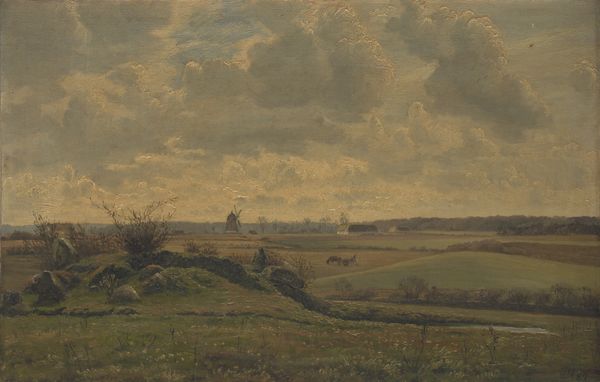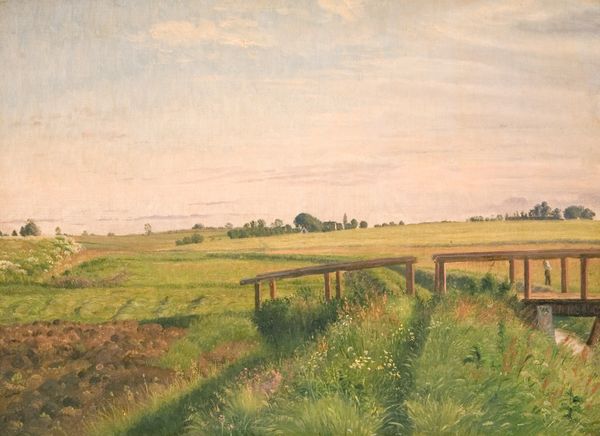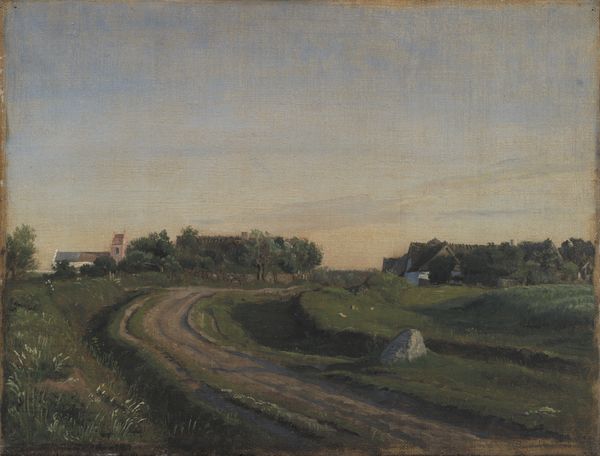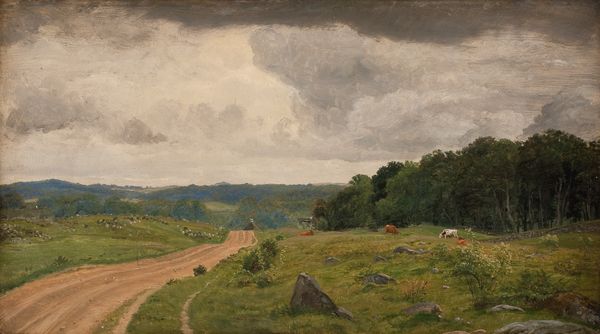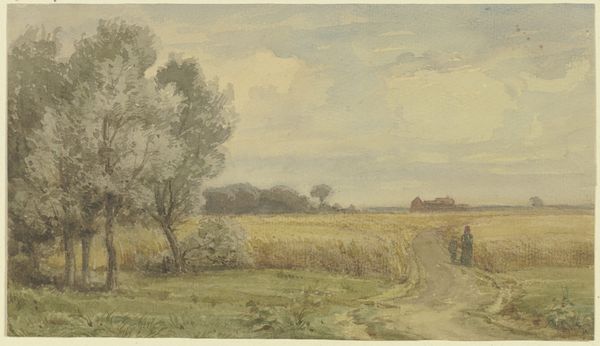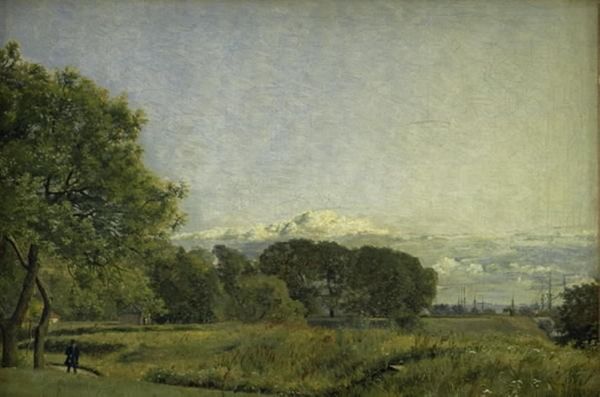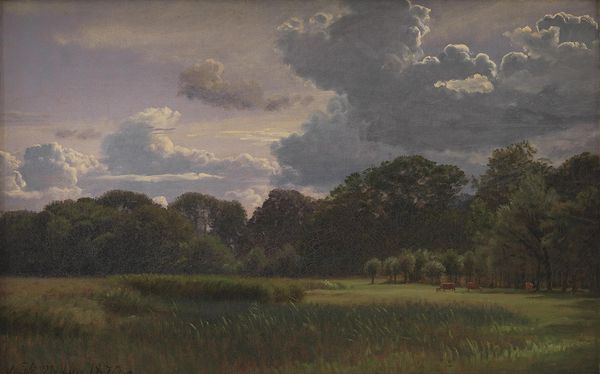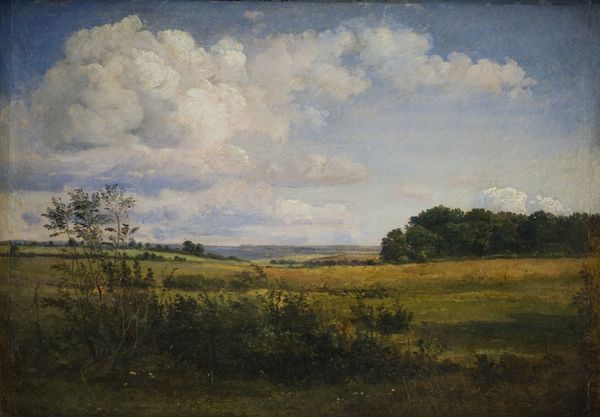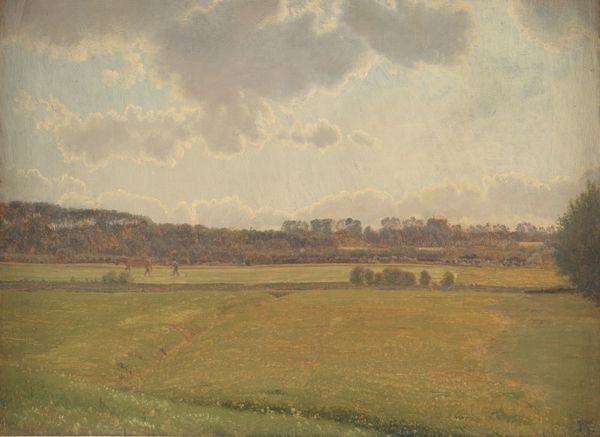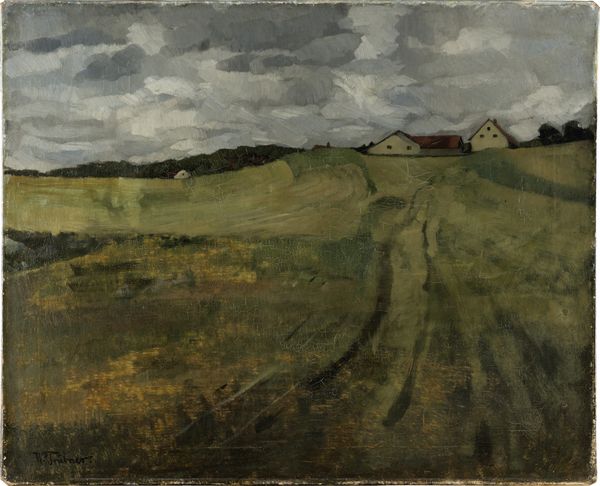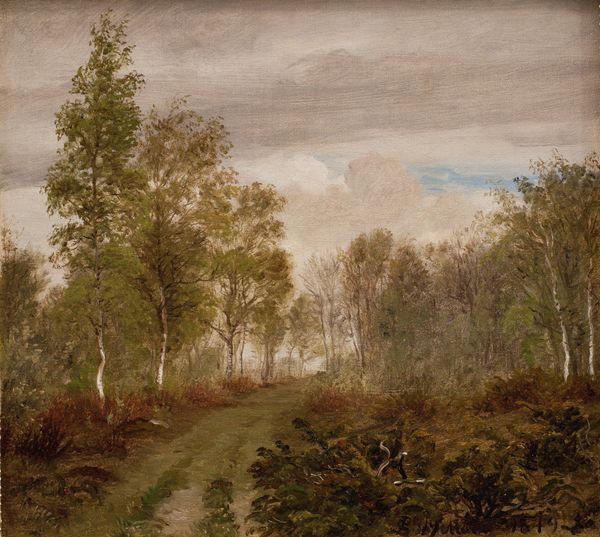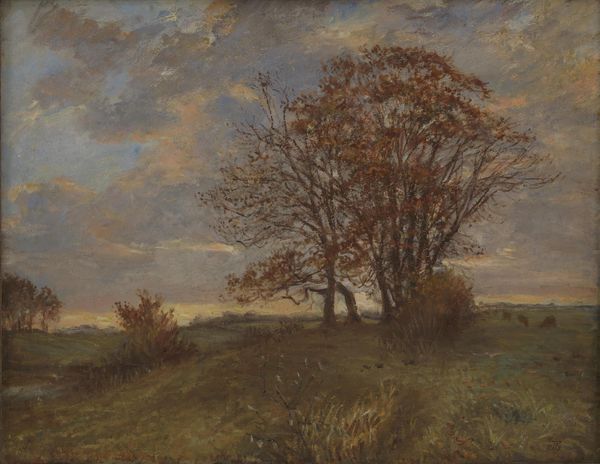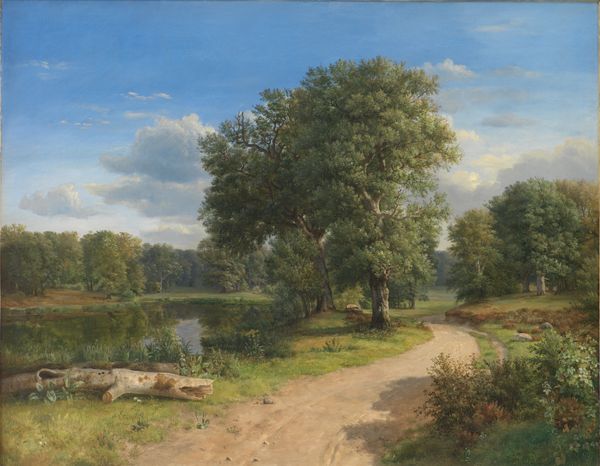
Dimensions: 29 cm (height) x 39 cm (width) (Netto), 39.2 cm (height) x 47.4 cm (width) x 5.4 cm (depth) (Brutto)
Curator: Joakim Skovgaard's "Sommerlandskab," created in 1877, presents us with a slice of summer in watercolor, held here at the SMK. Editor: There’s an incredible stillness. The hazy light and soft colors evoke such a quiet, contemplative mood. Almost melancholy, don't you think? Curator: Interesting you say that. The choice of depicting everyday life within a rural setting does carry its own weight. Consider the socio-political forces influencing artists at the time – the move towards realism, a celebration of the common person and landscape amid industrial change. Skovgaard wasn’t just painting pretty pictures; he was engaging with contemporary societal shifts. Editor: But also, look at the figures depicted, they seem almost absorbed by the land itself; that romantic view on nature—nature’s grandeur dwarfing humanity… What statement could Skovgaard have been trying to make about their identities and roles? Are they just inhabitants? Or does it signal some type of return to, or idealization of nature? Curator: Precisely. Romanticism mingled with realism, shaped by the period's art institutions, training, and the audiences to which they catered. This balance between observed reality and emotional expression allows us to examine class, gender, and access to land during that era. Who gets to experience this pastoral scene? Who profits from it? Editor: It's in the brushstrokes themselves, right? The visible strokes—it isn't polished or idealized, yet it conveys emotion—perhaps hinting at labor, but viewed through a privileged lens. There's a power dynamic, a kind of subtle gaze. Curator: A potent way to articulate the public function of these landscape depictions. What they conceal or reveal speaks volumes. It prompts us to engage with art history, connecting visual aesthetics to intricate intersectional stories regarding identity, socio-economic structures, and politics. Editor: Absolutely. Next time I see a seemingly tranquil landscape, I'll definitely question whose tranquility it's actually depicting. Curator: And that is, perhaps, the most crucial insight to take forward. Thank you.
Comments
No comments
Be the first to comment and join the conversation on the ultimate creative platform.
